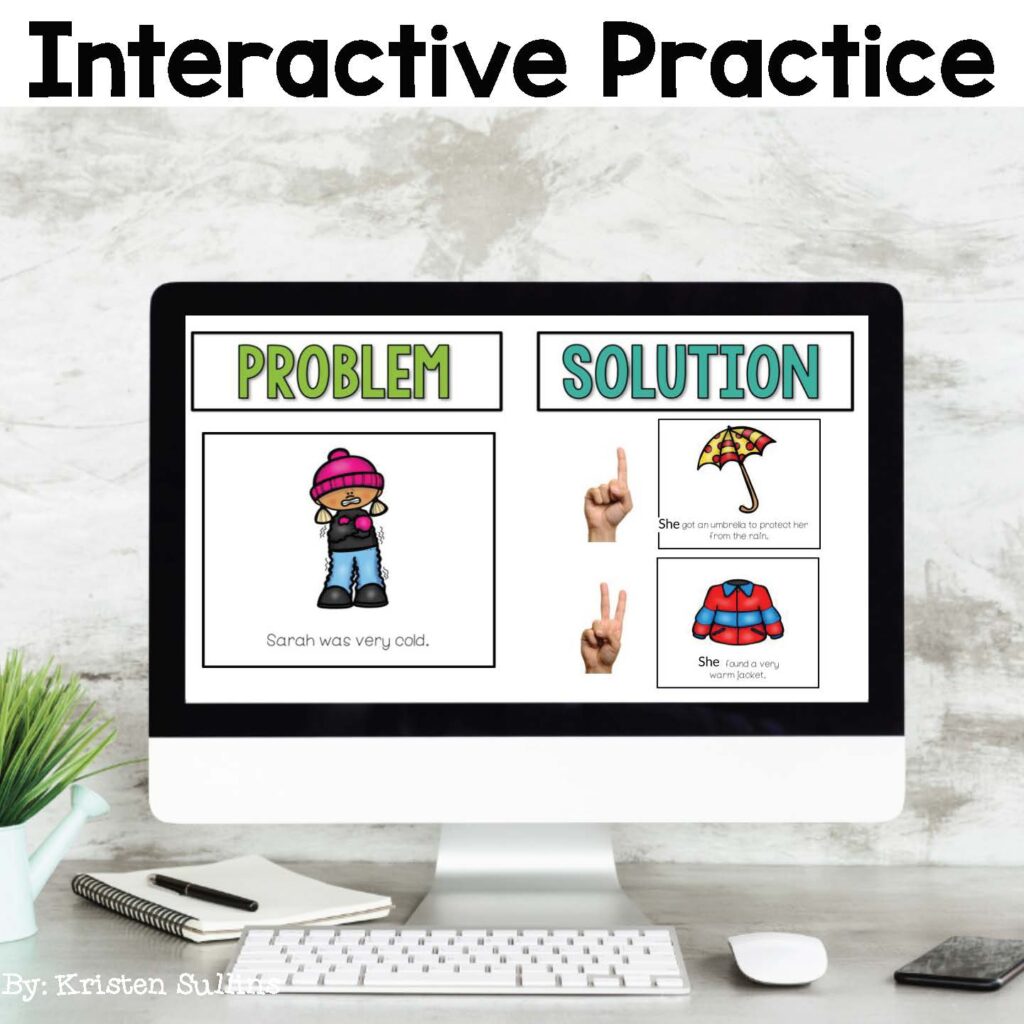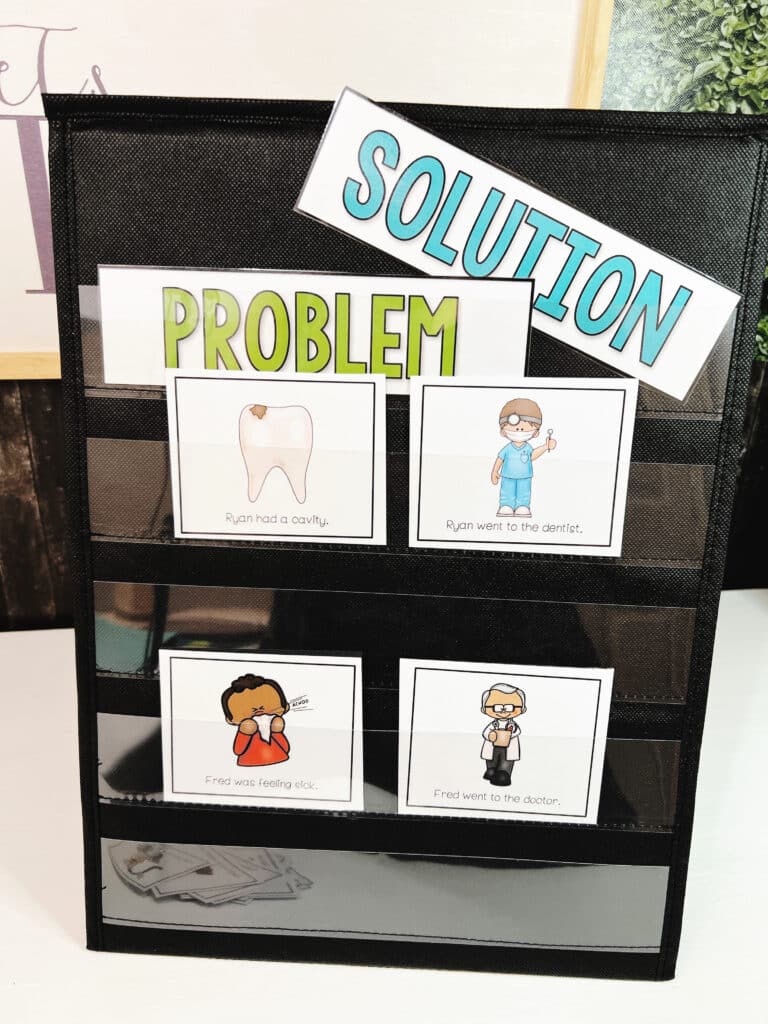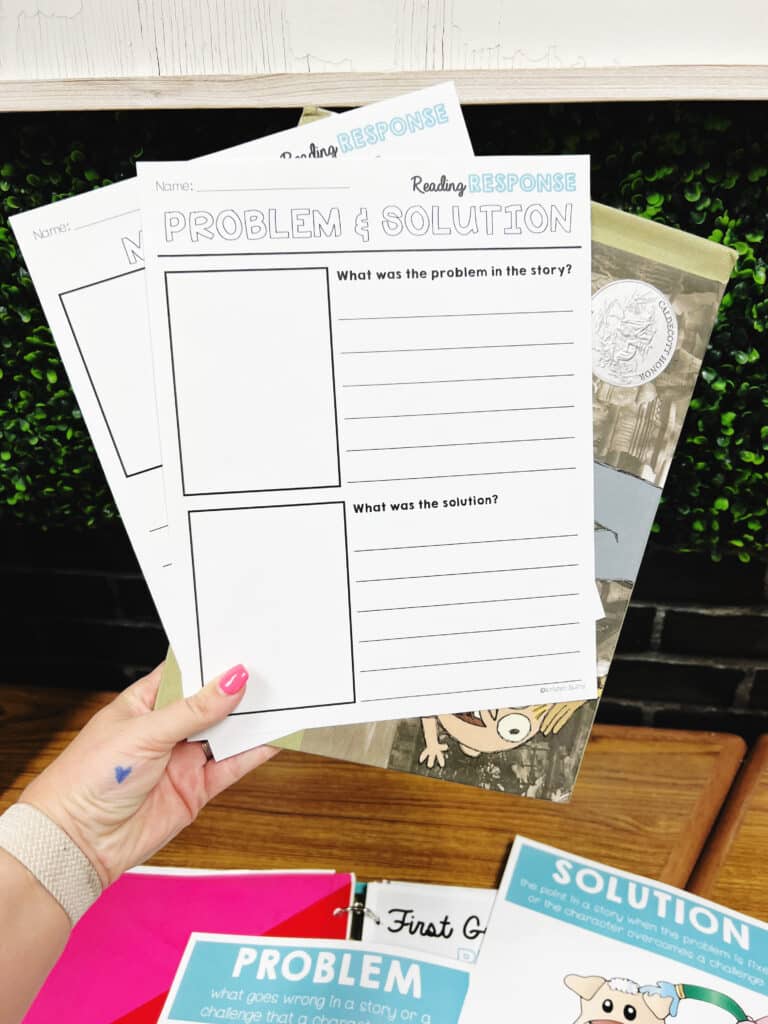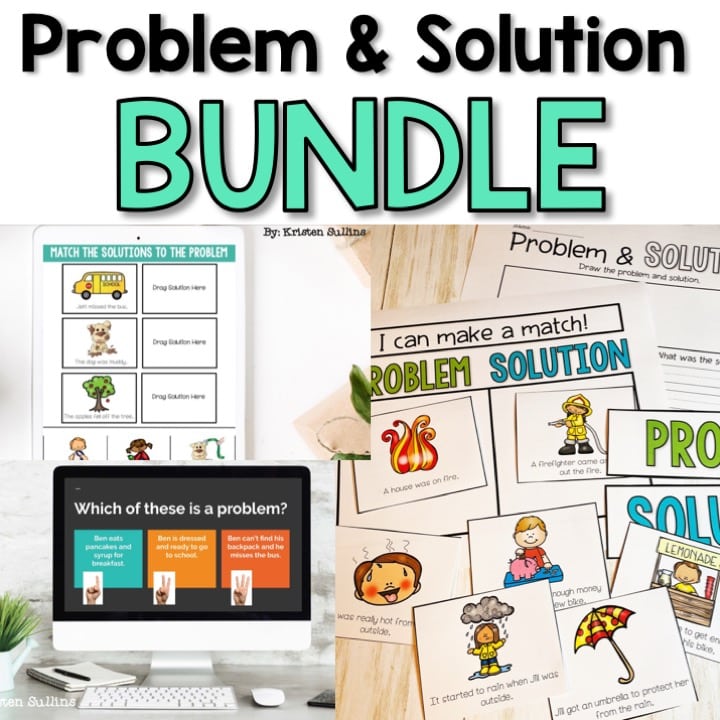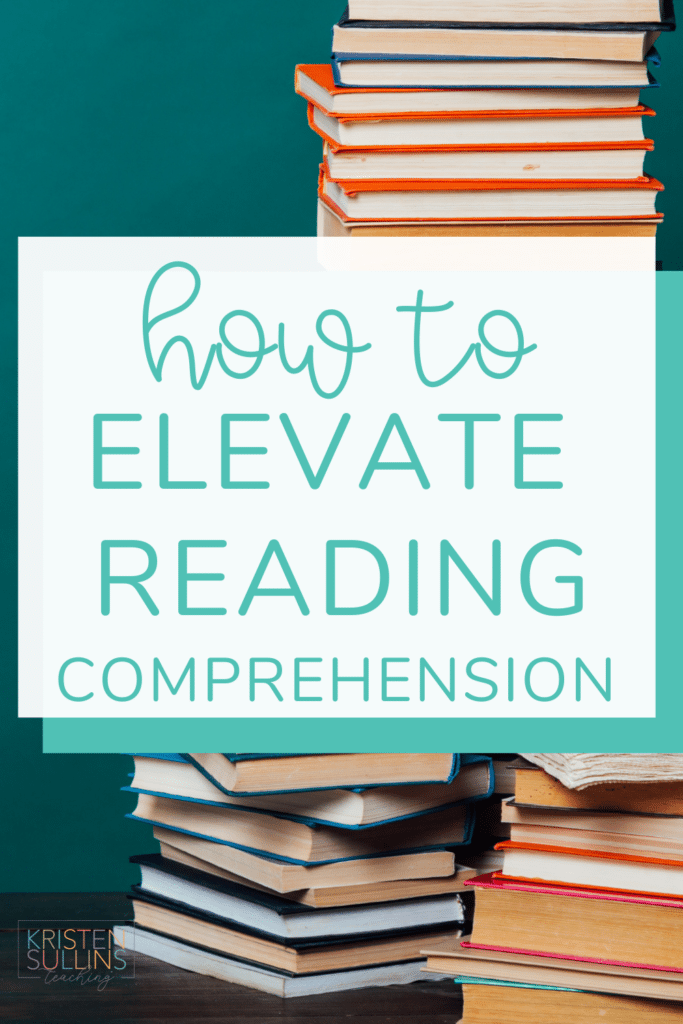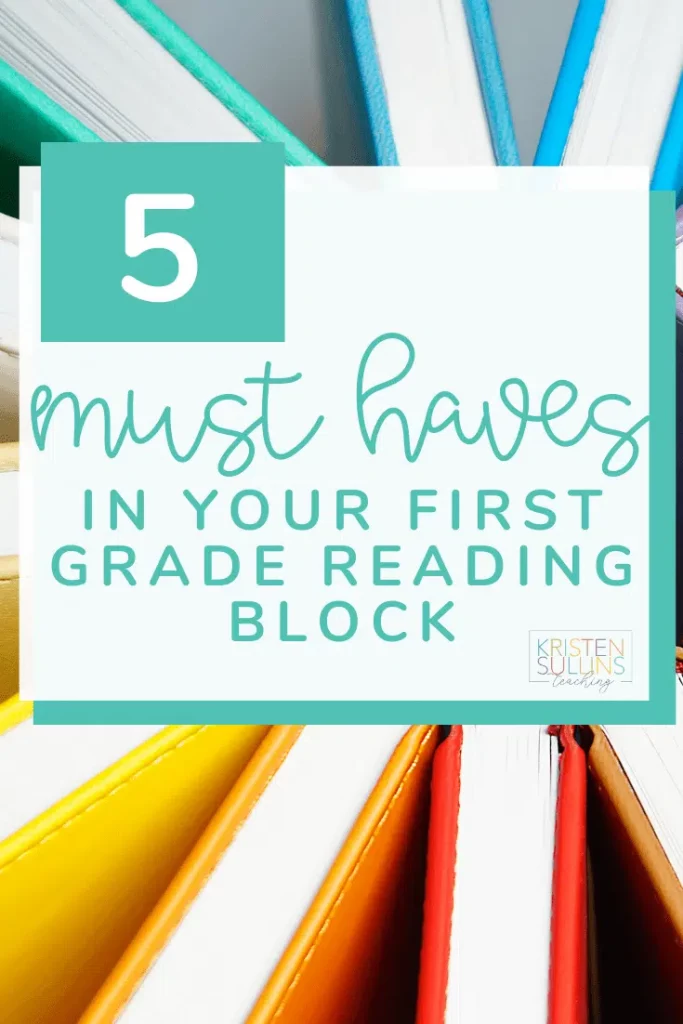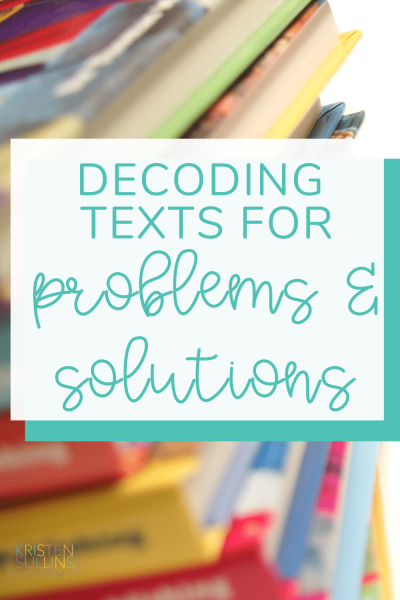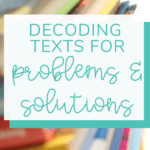Ever wonder how to turn those puzzled looks into “aha!” moments when teaching first grade students to identify problem and solution? You're not alone!
Text analysis is like the Sherlock Holmes of education – it's all about sleuthing out the hidden gems buried in words. But fear not, because I’ve got your back!
In this blog post, we're diving into the nitty-gritty of teaching students how to crack open texts like a pro.
Here are four steps for effectively teaching problem and solution in first grade:
Step 1: Understand the relationship between a problem and solution
Step 2: Explore different types of problems based on different text types
Step 3: Brainstorm and predict what they think the solution could be
Step 4: Identify the point in the text where the problem is resolved
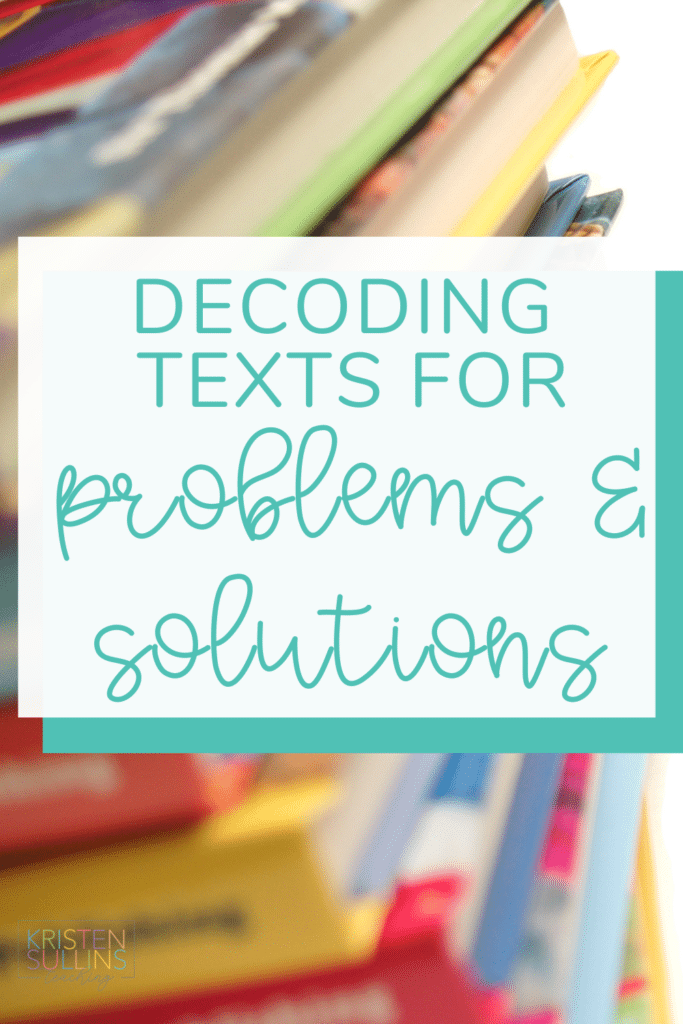
Step 1: Understand the relationship between a problem and solution
If you have ready any of my other posts about teaching reading comprehension, you know how much value I put into starting a unit with non-text activities. Why?
If you teach lower elementary, then you know that there is SO much that goes into the comprehension of a book. First grade students are learning so much at this age and even listening comprehension requires their little brains to work so hard.
Why do I bring this up?
Because I want you to think about how hard they are ALREADY working when they are listening to a read aloud and when you use a mentor text to introduce a NEW SKILL, most students’ brains go into overload!
So, let me dive into one of my favorite ways to introduce a reading comprehension skill and this one may surprise you, but it’s a… SLIDESHOW!
I know what you are thinking, how boring! But not if you make it interactive!
This is an activity that would be super easy to make yourself or with your teaching team, but it should essentially include:
- Teaching Slides: Introduces students to WHAT the skill is
- Guided Practice: Introduces students to HOW to apply the skill
- Interactive Practice: Gives students an example and allows them to PRACTICE the skill in an easy and concise way
By providing students with chances to participate in the slideshow and get their bodies moving by physically showing their answers, students are much more likely to better understand the skill of problem and solution!
[P.S. If you are looking for a “done for you” slideshow on Problem and Solution, make sure to check out the end of this post!]
Step 2: Explore different types of problems based on different text types
Before you start teaching, make sure you give your students a clear understanding of the comprehension strategy: Problem and Solution.
There can be several problems in a story depending on the text structure and genre, but you can almost always identify one major problem and one major solution.
Have students evaluate what they think the MOST important problem and solution was.
Also, it is important to explore with students how different characters can experience different problems/solutions depending on the text structure or genre.
Modeling the skill of identifying the problem and solution and repeated exposure is the focus of your whole group lesson. Don’t be afraid to get creative!
Vocabulary to Know:
Problem: what goes wrong in a story or a challenge that a character faces
Solution: the point in a story when the problem is fixed or the character overcomes a challenge
Comprehension Goals:
Describing the problem may include:
- Identifying the problem the character(s) is experiencing in the beginning of the story
- Asking questions and making predictions about possible upcoming events and about possible ways to solve the problem
- Understanding how the events and characters influence the problem throughout the story
Describing the solution may include:
- Confirming or revising predictions about the solution
- Explaining how the solution solves the problem
- Describing what happens to the character(s) because of the solution
[P.S. Are you searching or scrambling to find the right resources? I have good news.. I’ve created a teacher’s guide of standards aligned resources to help you teach your students how to identify the problem and solution in a story. Check it out at the end of this blog post!]
Bonus Teacher Tip: Save planning & instructional time by re-purposing activities
Do you ever look at other teachers and think “How are they ‘fitting it all in’”? Well.. first of all, they aren’t. BUT, they are able to do a lot more by repurposing what they are using!
What do I mean?
Intentionally plan activities that you can use to introduce a skill whole group, then use it again to re-teach at your small group and then integrate them into independent work stations.
It is also very helpful to be intentional about which mentor texts you are going to use during that unit that you can reference again in other units! For example, Knuffle Bunny by Mo Willems is an excellent mentor text for problem and solution, but it is also a great book to re-visit again during Understanding Character or Making Inferences!
You will save tons of time by reading it once, then simply referencing it the second time!
Step 3: Brainstorm and predict what they think the solution could be
I have found a lot of success by having my students practice connecting problem and solution with a writing station.
In this writing and comprehension station, students match a problem and a solution card. This builds an early foundation of identifying problem and solution in a story.
For students who need additional support, you can use all 12 problem and solution cards along with the anchor chart headers to sort and match the problems and solutions in a whole group or small group setting.
For another hands-on and engaging strategy, you can pass the 12 cards out to students.
Step 1: By looking at their card only, they have to evaluate if they are holding a problem card or a solution card.
Step 2: Students must then predict the solution if they are holding a problem card or predict the problem if they have a solution card.
Step 3: Students must work together as a group to find their matching problem and solution partner!
I love this activity because it gets students up and moving and applying everything they have learned about problem and solution. This also gives you a great opportunity to talk to students one on one who might need a little extra support.
TIP: Make sure you have students explain their reasons behind their predictions. This will prepare them to write a short-constructed response that provides evidence and explains their thinking!
Step 4: Identify the point in the text where the problem is resolved
You are starting to near the end of your problem and solution unit and you need to know who is getting it and who needs more support!
Which means it is time to start assessing with reading response sheets. These reading response sheets are generic for a reason – it saves you time as a teacher to use them over and over with as many books as possible, but it also allows students to focus on the skill of problem and solution rather learning the format of a new assessment.
I use the same reading response page as my:
-assessment
-independent work (practice)
-small group
-station work
-intervention
If you don’t want to print and copy something, you can teach students how to fold a piece of paper in half and write the problem on the left and the solution on the right; OR you can have them write the problem on the top and the solution on the bottom. This strategy makes an incredibly easy reading comprehension station activity!
Problem and Solution Activities for First Grade
Ready to have all of your resources for teaching “Problem and Solution” in one place?
This is your one-stop shop for teaching your students how to identify problem and solution in a text.
I’ve included lesson plan ideas, a writing station, a digital station and an interactive slideshow!


